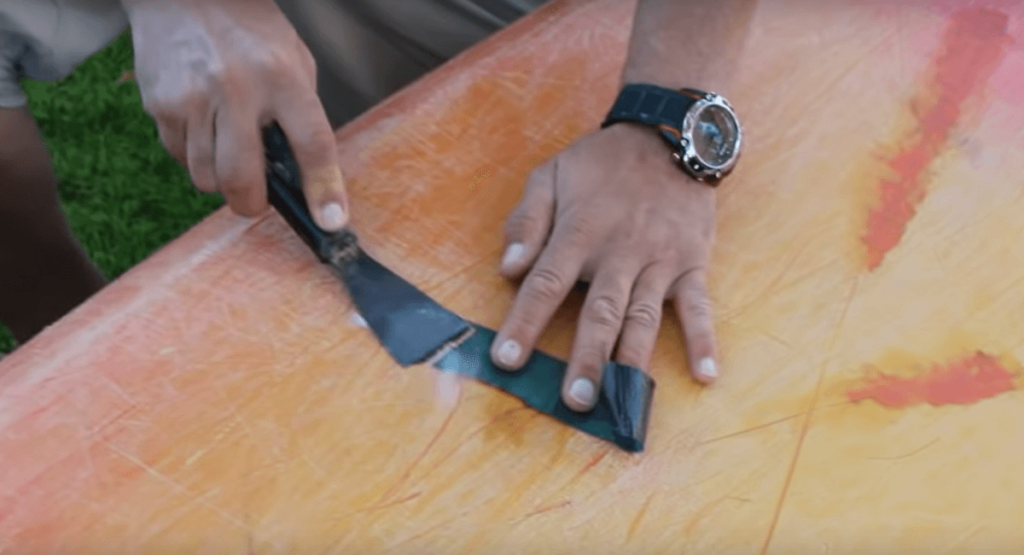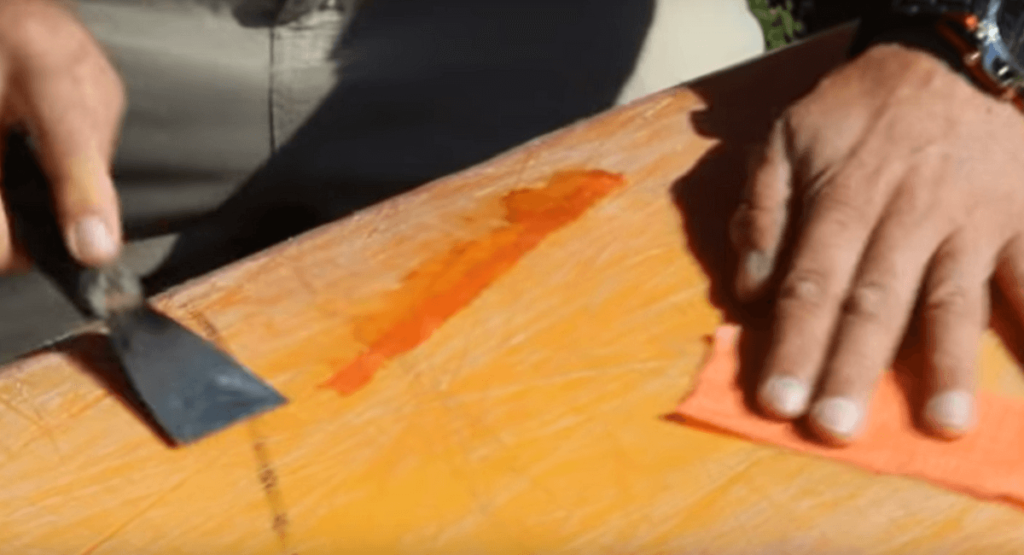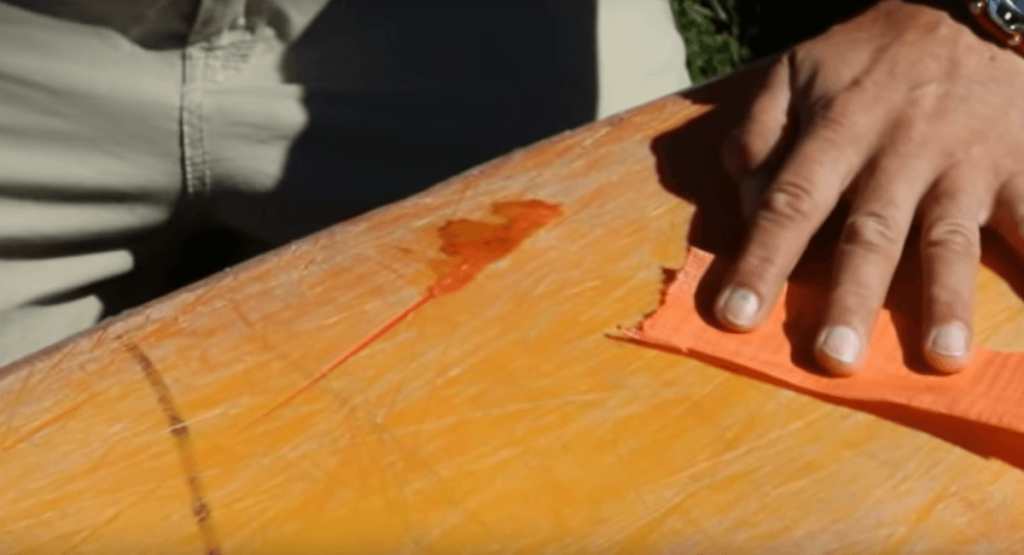To repair plastic kayak scratches, begin by cleaning the damaged area with soapy water and sanding the scratches lightly using fine-grit sandpaper. Then, apply a plastic repair kit with a putty-like substance and smooth it over the scratches.
Once dry, sand the area again to blend with the kayak’s surface, and finally, apply a waterproof sealant to protect the repair. If you’re a kayak enthusiast, chances are you’ll encounter scratches or minor damage on your plastic kayak over time.
While these imperfections are inevitable, they can be easily repaired with the right techniques. In this guide, we’ll cover the step-by-step process of repairing plastic kayak scratches, ensuring that your beloved watercraft stays in top condition for your future adventures. Whether you’re a novice or an experienced kayaker, learning how to repair these scratches will help extend the lifespan of your kayak and keep it looking pristine. Let’s dive in and explore the simple yet effective methods for restoring your plastic kayak’s surface.
Understanding Plastic Kayaks
Types Of Plastic Used In Kayak Manufacturing
High-Density Polyethylene (HDPE): Commonly used for its durability & impact resistance.
Polyethylene Terephthalate (PET): Offers lightweight construction suitable for recreational kayaks.
Acrylonitrile Butadiene Styrene (ABS): Provides a balance of strength and flexibility.
Characteristics Of Plastic Kayaks
Lightweight: Easy to transport and maneuver in the water.
Durable: Resists impacts and abrasions for long-lasting performance.
Flexible: Absorbs shocks and adapts to different water conditions.
Assessment Of Scratches

Before repairing plastic kayak scratches, it’s important to assess the damage to determine the appropriate repair method. Identifying surface scratches is the first step. These scratches are typically superficial and only affect the outer layer of the kayak’s plastic. They often appear as light marks on the surface, without any deep indentations.
For assessing deep scratches, a closer inspection is necessary. Look for scratches that have penetrated deeper into the plastic, leaving visible indentations or rough edges. Deep scratches may compromise the structural integrity of the kayak if left unaddressed.
Tools And Materials Needed

Repairing scratches on a plastic kayak requires some essential tools and materials. Having the right equipment and supplies is crucial for a successful repair job. Whether you’re a beginner or a seasoned kayaker, ensuring that your kayak is in top-notch condition is essential. Let’s delve into the tools and materials you will need for this repair project.
Essential Tools For Repair
To effectively repair plastic kayak scratches, you will need the following essential tools:
- Sandpaper: Medium and fine-grit sandpaper for smoothing the surface.
- Heat Gun: Used to soften the plastic for reshaping and repairing.
- Putty Knife: For applying filler and smoothing the surface.
- Gloves: To protect your hands during the repair process.
- Masking Tape: Used to protect surrounding areas during the repair.
Materials Required For Scratches
When repairing scratches on your plastic kayak, you will need the following materials:
- Plastic Welding Kit: To melt and fuse the plastic, effectively repairing deeper scratches.
- Kayak Repair Putty: Specifically designed for repairing scratches and gouges in plastic kayaks.
- Primer and Paint: Apply a finishing coat and protect the repaired area from further damage.
- Clean Cloth: For wiping and cleaning the repair area.
Diy Techniques For Repair

Filling Small Surface Scratches
To fill small surface scratches on your plastic kayak, follow these steps:
- Thoroughly clean the scratched area with mild soap and water. Avoid using harsh chemicals.
- Apply a small amount of plastic repair compound onto the scratch. Smooth it over with a putty knife.
- Let the repair compound dry completely according to the manufacturer’s instructions.
- Sand the filled area gently with fine sandpaper to blend it with the surrounding surface.
- Apply a protective layer of wax to seal the repair and prevent future damage.
Repairing Deep Scratches
For deep scratches that require more intensive repair:
- Cleanse the scratched area meticulously to ensure proper adhesion of the repair materials.
- Use a plastic repair kit that includes epoxy and fiberglass cloth for structural support.
- Fill the deep scratch with the epoxy and layer the fiberglass cloth over it for reinforcement.
- Allow the epoxy to cure fully as per the manufacturer’s guidelines before sanding it down smoothly.
- Finish by applying a quality marine-grade paint to match the color of your kayak.
Professional Repair Options
While minor scratches on your plastic kayak can often be repaired at home with the right products and techniques, there may be situations where seeking professional help is necessary. To help you make an informed decision, here are two essential considerations to keep in mind: When to Seek Professional Help and Cost Considerations for Professional Repairs.
When To Seek Professional Help
If you notice significant damage to your plastic kayak, such as deep scratches, cracks, or holes, it may be time to consult a professional for repair assistance. Professional kayak repair specialists have the expertise and experience to assess the extent of the damage and determine the most effective and long-lasting repair methods. Their knowledge ensures that your kayak is restored to its original condition, maximizing its lifespan and maintaining its structural integrity.
Cost Considerations For Professional Repairs
Before turning to professional repair services, it is essential to consider the cost involved. Professional repairs can vary in price depending on the extent of the damage, the materials needed, and the expertise of the repair specialist. While the cost may be higher than DIY methods, it is crucial to weigh the potential benefits against the expense. Opting for professional repairs can often provide peace of mind, knowing that your kayak is in the hands of trained professionals who will use high-quality materials and techniques to ensure a durable and reliable repair.
Let’s summarize the key points discussed:
- Significant damage such as deep scratches, cracks, or holes may necessitate professional repair assistance.
- Professional kayak repair specialists have the knowledge and expertise to assess and repair the damage effectively.
- The cost of professional repairs can vary depending on several factors, including the extent of the damage and the expertise of the repair specialist.
- While professional repairs may be more expensive, they often provide long-lasting results and peace of mind.
Preventive Maintenance
Preventive maintenance is essential to keep your plastic kayak in top shape. By following a few simple tips and adopting proper storage practices, you can reduce the chances of scratches and extend the lifespan of your kayak. In this section, we will discuss some valuable tips to prevent kayak scratches and ensure your kayak stays in pristine condition.
Tips To Prevent Kayak Scratches
Properly maintaining your kayak not only enhances its overall performance but also protects it from potential damage. Here are some effective tips to prevent kayak scratches:
Proper Storage Practices
Storing your kayak correctly is crucial when it comes to preventing scratches. By following proper storage practices, you can safeguard your kayak against unnecessary damage. Here’s what you need to do:
- Find a suitable location: Store your kayak in a safe and secure area, protected from extreme temperatures, direct sunlight, and potential impact. A well-ventilated shed, garage, or kayak storage rack are ideal options.
- Elevate the kayak: If possible, elevate your kayak off the ground using a sturdy storage rack or foam blocks. This helps to prevent scratches caused by sitting on rough surfaces or on the ground.
- Protective cover or tarp: Consider using a protective cover or tarp to shield the kayak from dust, debris, and sunlight. Ensure the cover is securely fastened to prevent any moisture buildup.
- Avoid excessive weight: Do not stack heavy objects on top of your kayak during storage, as this can cause unnecessary pressure and potential damage.
By following these proper storage practices, you can effectively minimize the risk of scratches to your kayak, allowing you to enjoy your adventures without worrying about potential damage.
Frequently Asked Questions Of How To Repair Plastic Kayak Scratches
How Can I Repair Plastic Kayak Scratches?
To repair plastic kayak scratches, start by cleaning the area with soap and water. Then, apply a plastic repair kit using a soft cloth, following the instructions provided. Allow the repair to dry completely before using the kayak again. It’s important to choose a kit that is specifically designed for repairing plastic to ensure the best results.
Will Repairing Scratches Affect The Performance Of The Kayak?
No, repairing plastic kayak scratches will not affect the performance of the kayak. In fact, repairing scratches can help prevent further damage and ensure the longevity of your kayak. By patching up any scratches, you’ll maintain the smooth surface of the kayak, which can enhance its performance on the water.
Can I Use Household Items To Repair Plastic Kayak Scratches?
While there are some DIY methods using household items to repair plastic kayak scratches, it’s recommended to use a specific plastic repair kit. These kits are designed for the purpose and provide the best results. Household items may not adhere properly or may not withstand the water and outdoor conditions as well as specialized repair kits.
Conclusion
In caring for your plastic kayak, addressing scratches promptly will ensure longevity. By following the repair methods outlined, you can maintain the aesthetic appeal and performance of your kayak. Regular maintenance and swift action are key to preserving the durability and functionality of your kayak for years to come.
